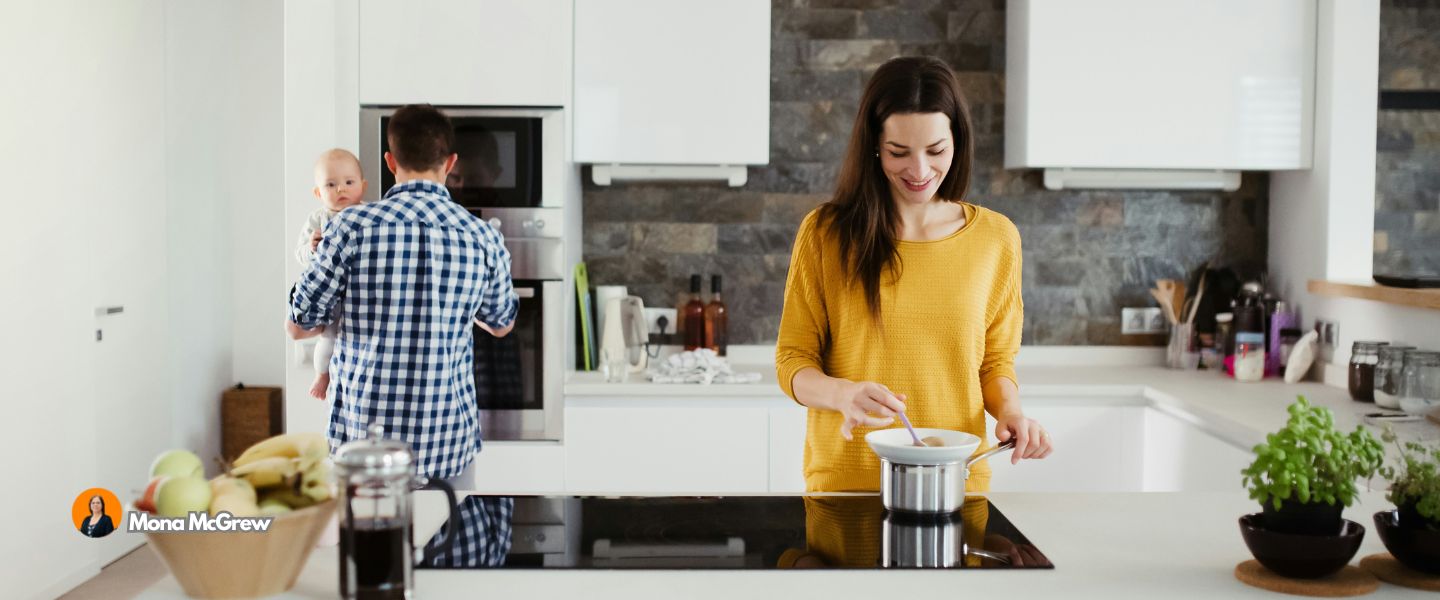
Designing a new kitchen is exciting - but once you hit the “buy appliances” stage, things can get overwhelming fast. From measurements and power requirements to warranties and code regulations, there’s so much to consider.
We sat down with one of our designers, Mona McGrew, to gather the real-world tips she shares with clients every day. Here’s what she wishes more people knew before purchasing their kitchen appliances.
Before you get starry-eyed over a $12,000 range, establish a realistic appliance budget. Then, make a full list of what you’ll need - refrigerator, cooktop, oven, microwave, hood, dishwasher, maybe even a wine fridge or built-in coffee system.
💡Pro Tip: Mona encourages you to share this list with your kitchen designer early, and notify them of any changes as you go. Appliance specs affect cabinet sizes, hood clearances, and even countertop cutouts.
Lead times vary — some high-end appliances take months to arrive. Think about your needs early in the design process to avoid delays.
Larger cooktops (like 48" ranges) are trending, but may require compromises elsewhere. Make sure your layout can accommodate your dream setup before you commit.
Once you've chosen your appliances, send your designer the model numbers, it helps with cabinet sizing, vent hood specs, electrical planning, and more.
Buying from a big-box store? Remember: the warranty starts the day you purchase, not the day it's installed. Hold off until you're closer to delivery.
Once the design is finalized and cabinets are ordered, avoid switching appliances. If you must change, always tell your designer immediately, it can impact everything from cabinet widths to ventilation placement.
If you plan to reuse your current appliances, that’s okay just let your designer know upfront. They’ll build around those exact sizes.
As for secondhand appliances? Think twice.
“They usually don’t last as long, and you might be inheriting someone else’s problems.”
Changing appliances can change your kitchen’s footprint and that can affect everything from your crawlspace to your tiling, electrical, and venting.
Switching from an electric to a gas stove, for example? You’ll likely need:
Don’t assume it’s a simple swap. Know what changes are involved.
Most appliances run on 120V, but some (like electric stoves, ovens, or dryers) require 220V outlets. And just because your stove is electric doesn’t mean you don’t still need 120V nearby for lights or controls.
Be sure to check your home’s electrical capacity -especially in older homes- and plan for any panel upgrades or rewiring if needed.
"It’s possible, but tricky," says Mona
“With an electric stove, yes but with gas, you'll need proper venting, a heat shield, and code compliance.”
If you're unsure, talk to both your designer and your appliance installer before making that call.
The good news: you can mix brands if you want. Most modern appliances have smaller logos, and finishes like stainless or matte black are now more standardized.
Choose appliances based on performance and reviews, not just the logo, Mona urges.
Appliances with Wi-Fi connectivity or see-through fridge doors look flashy, but many homeowners never use those features.
Instead, focus on:
When in doubt, visit an appliance showroom but go prepared. Salespeople can be helpful, but remember:
“Stick to your guns. Tell them what you want and don’t let them upsell you on features you’ll never use.”
If all of this feels overwhelming, that's normal. Appliances are a big investment, and you want to get it right.